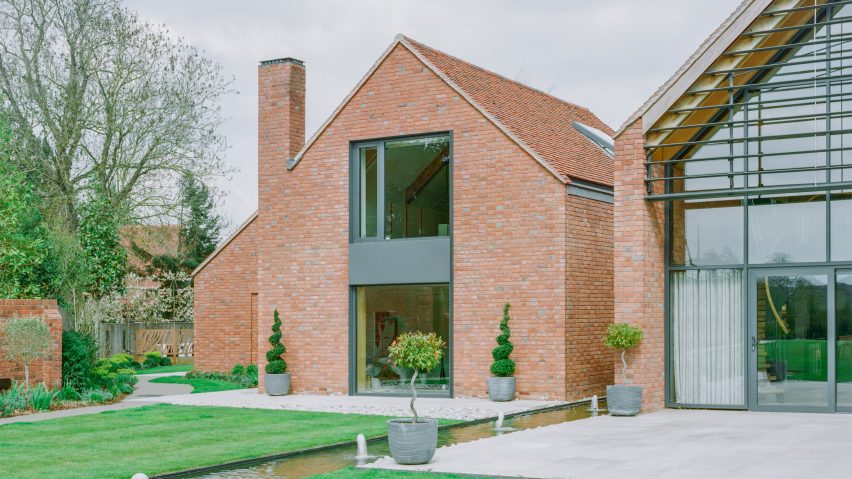“[It] seeks to forge a relationship between the local church and a quality historic property to evolve an architecture of red brick, pitched roof forms and courtyard gardens in a relevant and respectful manner.”
A pathway that divides the land is shaded by a pergola made of steel, zinc, and wood, and entry to the site is located beyond a red brick wall with holes in it. This route ends in a narrow pool on one side and merges with the house in a glazed link section.
The largest volume, which houses a living, dining, and kitchen area beneath a skylit study mezzanine, is connected to a neighboring gabled form that houses a more quiet lounge beneath the main bedroom through this glass entrance space.
The larger shape has views across a small pond and the river through a fully-glazed facade shielded by metal louvres. While the opposite end incorporates windows behind a screen of perforated masonry.
Moreover, The master bedroom has two views: one faces the river and the garden, and the other faces a courtyard that resembles a cloister and is partially encircled by the covered walks that link the various architectural forms of the house.
“One side of the house seeks to take in and accentuate fantastic river views whilst to the other, a series of cloistered spaces border a reflecting pool, all set behind a red-brick garden wall,” Bassi stated.
“A perforated brick facade characterises the main gable face and creates a quiet theatricality in the way that the glazed walls, lights and life are partly concealed and reflect over the pool,” he stated.
A single-story volume to the north with guest bedrooms and a garage is fronted by a privacy-enhancing screen made of vertical wooden battens. Furthermore, Inside Lowater, the “honest expression” of its steel and timber structure contrasts with the more conventional usage of red brick. Also, the upper levels have an almost industrial air thanks to the exposed roof bracing.
Toby Fletcher and Ian Crane founded Fletcher Crane Architects in Kingston upon Thames in 2010.
Finally, find out more on ArchUp:


 العربية
العربية